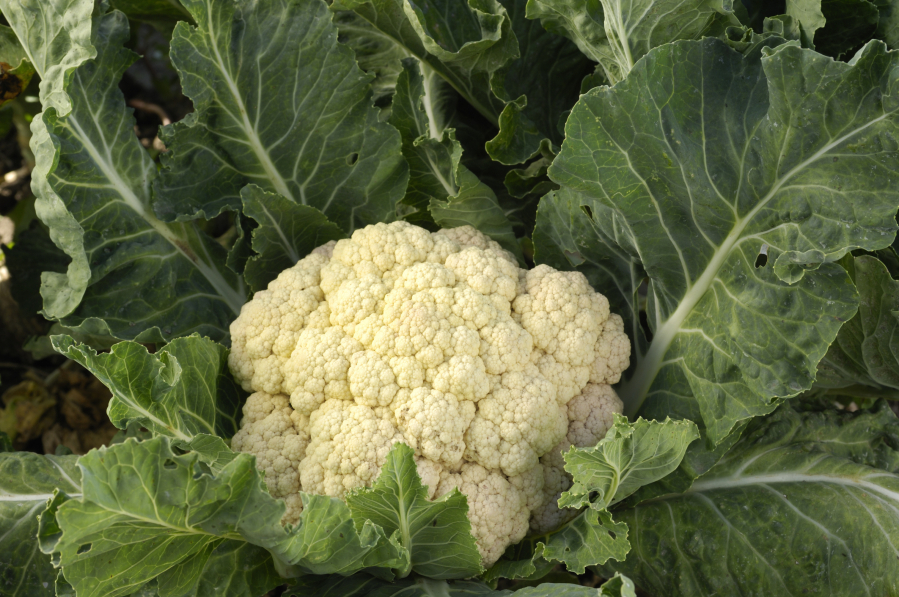Cauliflower is generally thought to be native to the general Mediterranean region. Although the white variety dates back over 2,000 years, the multicolored cauliflowers available today are relatively new.
In the 1970s a Canadian farmer discovered an orange-colored mutant growing in his field of white cauliflower. After years of selective breeding to improve taste and size, the orange cauliflower became available in grocery stores and supermarkets in 2003. Today, consumers also have the choice of purple or green cauliflower.
It is interesting to note that varieties of cauliflower were not always selected to include a large, compact head (or “curd”) and in many regions of the world, cauliflower crops still do not focus on those varieties. “Loose curd” cauliflower, for example, is widely enjoyed in many areas of China. Roughly speaking, “loose curd” cauliflower can be considered as comparable to broccoli raab — a form of broccoli that also lacks a large compact head and features longer stems and leaves.
Cauliflower requires cool growing temperatures — preferably in the 60s — making it a good autumn crop. Because of these particular temperature requirements, cauliflower is usually grown commercially and may not be the best crop for the beginner gardener.
Cauliflower is a rich source of vitamin C, potassium and B vitamins. The colored varieties are higher in some nutrients. For example, orange cauliflower has 100 times more vitamin A than the original white variety.
When purchasing cauliflower, look for clean, compact “curds” or florets in which the bud clusters are not separated. Spotted or dull-colored cauliflower should be avoided, as well as those in which small flowers appear. Heads that are surrounded by many thick green leaves are better protected and will be fresher. As its size is not related to its quality, choose one that best suits your needs.
To cut cauliflower, first remove the outer leaves and then slice the florets at the base where they meet the stalks. You can further cut them, if you desire pieces that are smaller or of uniform size. Trim any brown discoloration that may exist on the edge. Cauliflower florets are the part of the plant that most people eat. However, the stem and leaves are edible too and are especially good for adding to soup stock.
Store uncooked cauliflower in a paper or plastic bag in the refrigerator where it will keep for up to a week. To prevent moisture from developing in the floret clusters, store it with the stem side down.
Cauliflower contains phytonutrients that release odorous sulfur compounds, especially when heated. These odors become stronger with increased cooking time. If you want to minimize odor, retain the vegetable’s crisp texture, and in some cases reduce nutrient loss, cook the cauliflower for only a short time.
Cauliflower rice has become a popular way to enjoy this cruciferous vegetable. To make your own, simply cut head into small pieces and process in a food processor or blender until broken down into small, rice-sized pieces. Add a small amount of water and steam or make into fried rice.
For recipes and additional serving suggestions, check out Chef Scotty’s Market Fresh Recipes at http://ext100.wsu.edu/clark/?p=8163.
Jean Overbay is a Clark County WSU Extension Master Food Preserver. For additional recipes, food preservation and food safety information visit http://ext100.wsu.edu/clark?/p=1134. Have questions? Call MFP Helpline: 360-397-6060, extension 5366, or join Facebook Discussion Group — “WSU Home Food Preservers- Clark County.”



